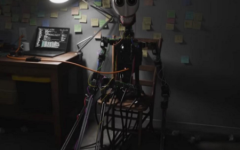Advertisement
Project Nightcall
Advertisement

In Project Nightcall, the player enters a decaying urban district after being summoned to resolve an unspecified issue. You begin alone in an open street, surrounded by buildings with glowing windows and empty sidewalks. There’s no one to greet you, no sign of who issued the message. A rusted vehicle, locked gates, and scattered debris mark a world that functions without activity. You continue because you’re expected to, not because anything tells you to. The environment reacts in silence. Something is operating in the background, but it never speaks.
A Place That Limits You by Design
Progress leads to a reinforced door, metal barriers, and narrow interiors. The route tightens without fully closing off, forcing movement but never encouraging it. A train car appears with vacant seats and flickering lights. Combat moments emerge suddenly—simple and brief—breaking up the silence without resolving it. There is no system to learn, no upgrade to acquire. Your flashlight works, but light doesn’t reveal much. The player is not meant to explore freely but to witness the structure of the space as it stands. It offers only forward movement through spaces that feel emptied with intent.
Short, Controlled, Unexplained
Project Nightcall is a brief horror experience made for solo play, lasting roughly ten minutes. The controls are minimal, the assets handmade, and the soundscape designed to emphasize stillness. There are no objectives beyond reaching the next door, no dialogue beyond the ambient world itself. The game presents familiar locations made uncertain by isolation and lack of response. Rather than provide narrative answers, it focuses on moment-to-moment presence. The game leaves gaps deliberately, and what fills them depends entirely on how the player reacts to silence, restriction, and the absence of safety.






















































































































































